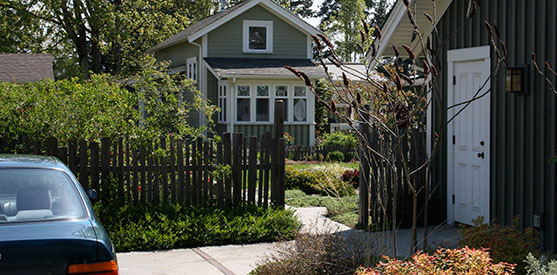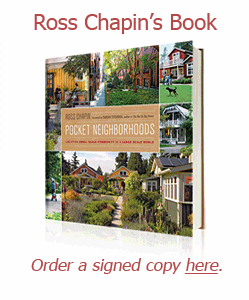|
|

|
Corralling the Car
In America, nearly everyone has a car. But cars don’t need to dominate our pedestrian spaces. Start first by locating parking areas to be good neighbors: shield parked cars from the street and the commons. Don’t let garage doors greet your guests. Whenever possible, locate parking areas so that residents and guests walk through the shared common area. If cars have access into the commons, be sure they are on pedestrian behavior (see Chapter 11: Lanes and Woonerfs in the Pocket Neighborhood book).
The arrangement of remote parking may be difficult to achieve in cold climates when residents want enter their homes through attached garages. While understandable, don’t let go of the walk through the commons too quickly. Locating parking areas away from the homes can allow more flexible use of a site, limit the dominance of garages and driveways, decrease the amount of hard surface, and allow more light into a home. |
|

 |
As soon as the motorcar became common, the pedestrian scale of the railroad neighbourhoods disappeared, and with it, most of its individuality and charm. The suburb ceased to be a neighbourhood unit: it became a suffused low density mass. But the motorcar had done something more than destroy the pedestrian scale, it either doubled the number of cars needed per family, or it turned the suburban wife into a full time chauffeur.
—Lewis Mumford, urban historian
The City in History, 1961
|
|